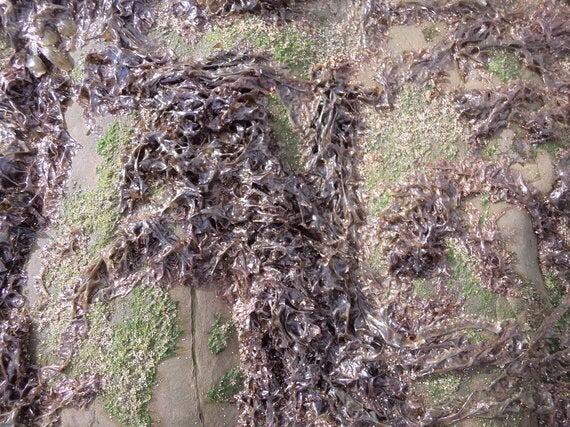Seaweeds unlike some fungi aren't toxic. Some species of seaweed don't taste very nice but an amateur seaweed collector, armed with a decent guide will soon learn to identify 10-15 seaweeds which are worth picking at low tide. The Desmarestia spp are one to avoid because they release sulphuric acid when picked.

The Japanese love affair with nori is well known, but the Japanese affection for the Dr Kathleen Mary Drew-Baker is less widely recognised. In Japan, Drew-Baker is revered as 'Mother of the Sea' because she identified the missing link in the life cycle of porphyra. Prior to Drew Baker's discovery, the life cycle of nori was misunderstood. It was perceived to be two different seaweeds and its harvest could not be guaranteed. Thus it was known as Gamblers' Grass. Various species of laver Porphyra can be found around the British coast although it cannot technically be called nori because the Japanese species can't be found wild in the U.K.
Laver is an extremely versatile seaweed although it is perhaps best known as laverbread, which is often served on a Welsh breakfast plate.
I collect and cook lots of species of seaweed but laver fronds are one of the most tricky to wash. My kitchen sink will still have a thin film of sand at the bottom, even after the laver has been rinsed for the second or even third time. At low tide laver can be found clinging to rocks on the middle and lower shore. It's often covered with a fine layer of sand and the less observant seaweed harvester will pass it by .The eagle-eyed however, might spy something resembling a fragment of bin liner caked onto the dry boulders. When the tide turns, laver floats away from the rocks and this is the easiest time to pick it. Rain moistens laver too. Pick laver with care and ensure that the holdfast (where it attaches to the rock) is left. Some laver species are epiphytes i.e. grow on other seaweeds and the colour varies too. Laver is classified as a red seaweed, but it may be green or almost black.
In the kitchen it can be added to stews and soups as a useful thickener but one of my favourite uses is in baking or in my sourdough starter. A couple of teaspoons of dried laver flakes add a subtle flavour, which is difficult to put a finger on.
To forage and make laver flakes sometimes known as black caviar.
Harvest about ½ a carrier bag of laver to fill a medium sized jam jar.
A carrier bag attached to a belt around your waist is useful because both hands are then free to gather seaweed. Use scissors to cut the laver fronds and harvest a little here and a little there. Rinse the laver in a rock pool to remove sand and any visiting invertebrates. Rinse the bag in seawater and return the laver to the bag Make a small hole in the bag and squeeze out excess seawater.
On returning to the kitchen, wash the laver very well and drain it in a colander for as long as possible. Squeeze out excess water and then dry the laver. This can be done on a newspaper-lined tray on a sunny windowsill, a low oven or food dehydrator. Some people like to use a hot oven but if you do, watch that the laver doesn't burn.
Blend the dry laver in a liquidiser and store in airtight containers or jars. Some cooks prefer to lightly toast the laver under a hot grill before blending.